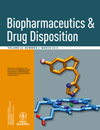PBPK as a tool in regulatory review
Corresponding Author
Shiew-Mei Huang
Office of Clinical Pharmacology, Office of Translational Sciences (OTS), Center for Drug Evaluation and Research (CDER), Food and Drug Administration (FDA), Silver Spring, MD, USA
Office of Clinical Pharmacology, Office of Translational Sciences (OTS), Center for Drug Evaluation and Research (CDER), Food and Drug Administration (FDA), Silver Spring, MD, USA.
E-mail: [email protected]
Search for more papers by this authorCorresponding Author
Shiew-Mei Huang
Office of Clinical Pharmacology, Office of Translational Sciences (OTS), Center for Drug Evaluation and Research (CDER), Food and Drug Administration (FDA), Silver Spring, MD, USA
Office of Clinical Pharmacology, Office of Translational Sciences (OTS), Center for Drug Evaluation and Research (CDER), Food and Drug Administration (FDA), Silver Spring, MD, USA.
E-mail: [email protected]
Search for more papers by this author
References
- 1 Rowland M, Peck C, Tucker G. Physiologically-based pharmacokinetics in drug development and regulatory science. Annu Rev Pharmacol Toxicol 2011; 51: 45–73.
- 2 Zhao P, Zhang L, Grillo J, et al. Application of physiologically based pharmacokinetic (PBPK) modeling and simulation in regulatory review. Clin Pharmacol Ther 2011; 89: 259–267.
- 3 Huang S-M, Rowland M. The role of physiologically-based pharmacokinetic modeling in regulatory review. Clin Pharmacol Ther 2012; 91: 542–549.
- 4 Zhao P, Vieira MLT, Grillo JA, et al. Evaluation of exposure change of non-renally eliminated drugs in patients with chronic kidney disease using physiologically-based pharmacokinetic modeling and simulation. J Clin Pharmacol 2012; 52: 91S–108S.
- 5 Viera MLT, Zhao P, Gil Berglund E, et al. Predicting drug interaction potential by using a physiologically-based pharmacokinetic (PBPK) model: case study of telithromycin, a time-dependent CYP3A inhibitor. Clin Pharmacol Ther in press.
- 6 Grillo JA, Zhao P, Bullock J, et al. Utility of a physiologically-based pharmacokinetic (PBPK) modeling approach to quantitatively predict a complex drug-drug-disease interaction scenario with rivaroxaban during the drug review process: implications for clinical practice. Biopharm Drug Dispos 2012; 99–110.
- 7 Leong R, Vieira MLT, Zhao P, et al. Regulatory experience with physiologically based pharmacokinetic modeling for pediatric drug trials. Clin Pharmacol Ther in press.
- 8 US FDA Drug Development and Drug Interaction website. http://www.fda.gov/Drugs/DevelopmentApprovalProcess/DevelopmentResources/DrugInteractionsLabeling/ucm080499.htm last accessed August 21, 2011.
- 9 US FDA Clinical Pharmacology Guidance for Industry. http://www.fda.gov/Drugs/GuidanceComplianceRegulatoryInformation/Guidances/ucm064982.htm last accessed August 21, 2011.
- 10 Zhang X, Lionberger RA, Davit BM, Yu LX. Utility of physiologically based absorption modeling in implementing Quality by Design in drug development. AAPS J 2011; 13: 59–71.




